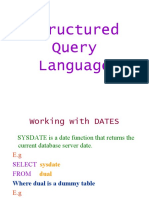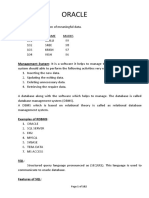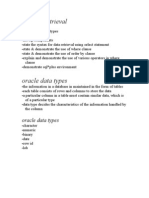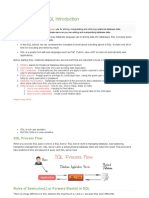0% found this document useful (0 votes)
31 views39 pagesBasic SQL Queries (DDL) & (DML)
The document outlines various SQL operations including creating and deleting databases and tables, inserting, deleting, updating, and reading records from tables. It also covers clauses such as WHERE, ORDER BY, GROUP BY, and aggregate functions like COUNT, SUM, AVG, MIN, and MAX. Additionally, it discusses set operations and nested queries for advanced data manipulation.
Uploaded by
xahinsabah65Copyright
© © All Rights Reserved
We take content rights seriously. If you suspect this is your content, claim it here.
Available Formats
Download as PDF, TXT or read online on Scribd
0% found this document useful (0 votes)
31 views39 pagesBasic SQL Queries (DDL) & (DML)
The document outlines various SQL operations including creating and deleting databases and tables, inserting, deleting, updating, and reading records from tables. It also covers clauses such as WHERE, ORDER BY, GROUP BY, and aggregate functions like COUNT, SUM, AVG, MIN, and MAX. Additionally, it discusses set operations and nested queries for advanced data manipulation.
Uploaded by
xahinsabah65Copyright
© © All Rights Reserved
We take content rights seriously. If you suspect this is your content, claim it here.
Available Formats
Download as PDF, TXT or read online on Scribd
/ 39





















































































